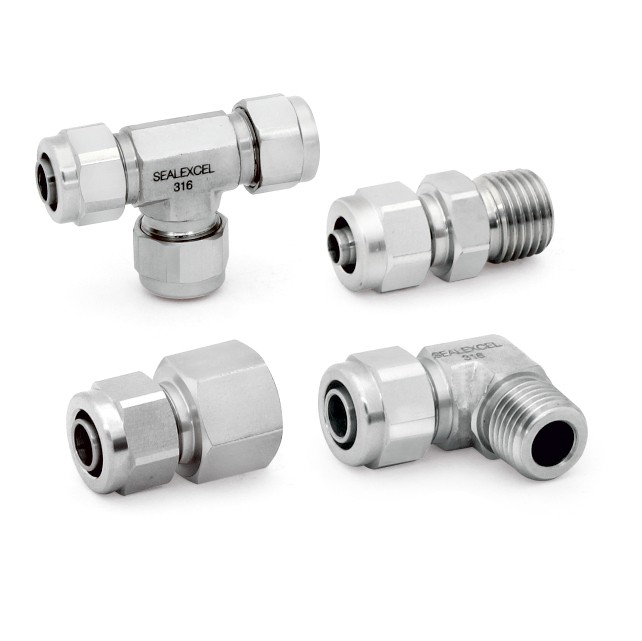How to Find the Best Tube Fittings Suppliers?
March 19, 2020Product Spotlight: 37 Degree Flared Tube Fittings
March 20, 2020Industrial systems use a wide range of valves and tube fittings. These components are carefully selected to ensure compatibility, performance and safety.
Whether you’re working with a pneumatic or a hydraulic system, you must be equipped to differentiate between different valves and fittings.
It can be hard to distinguish between threaded and compression fittings. It may be even more difficult to understand if the compression fittings will match your system.
However, having basic knowledge about compression fittings can save you from trouble. Here’s what you should know to make the right decision.
What makes the compression fittings different?
Both threaded and compression fittings make use of threads for improved connections. The difference lies in how each of them uses the threads to perform.
Threaded fittings have a single piece connection end. The threads are tapered and used to seal the connection. In contrast, compression fittings don’t use threads for sealing.
The latter have a three-piece connection that is responsible for creating the seal. Seal is created with a ferrule and a compression nut. Threads are only responsible to hold the body together with the nut.
How do they work?
Using compression fittings, the seal is created by application of force.
Their three component assembly comprises a compression nut, an inner ring or ferrule and a connector. If the nut is properly tightened, the ferrule presses against the tube.
The force exerted for this action is enough to remove excess space that may be present in the joint. This prevents the transferring fluid or gas from leaking.
As mentioned above, it is the ferrule that creates the seal, not the thread or connection.
Are they a good choice?
For most systems, yes. Compression fittings provide a good enough seal, without requiring a soldered or welded connection. 
You can easily disassemble the fitting for maintenance in an area. The joints can be easily broken and reassembled, without risking damage.
However, don’t over-tighten the fitting when assembling it. It can damage the ferrule or the tube. Stop tightening it if the nut no longer turns with reasonable force.
Since they don’t require welding or soldering, compression fittings are a good option for high temperature applications or with flammable materials.
You can achieve high performance and fast assembly with our flared and non-flared compression fittings.
As renowned compression tube fitting manufacturers, we offer multiple designs to best meet your application requirements. For instance, our 37 degree flare fittings are widely used in various industrial systems. Browse our product catalogue for more information.




